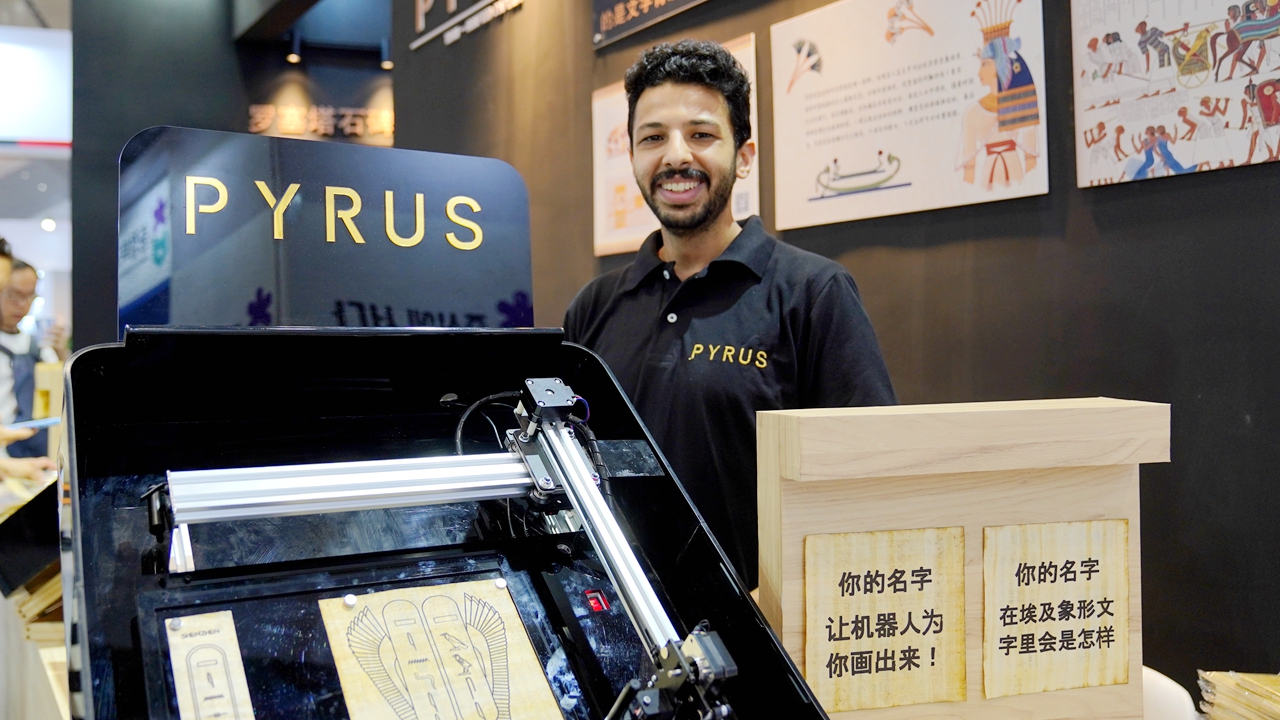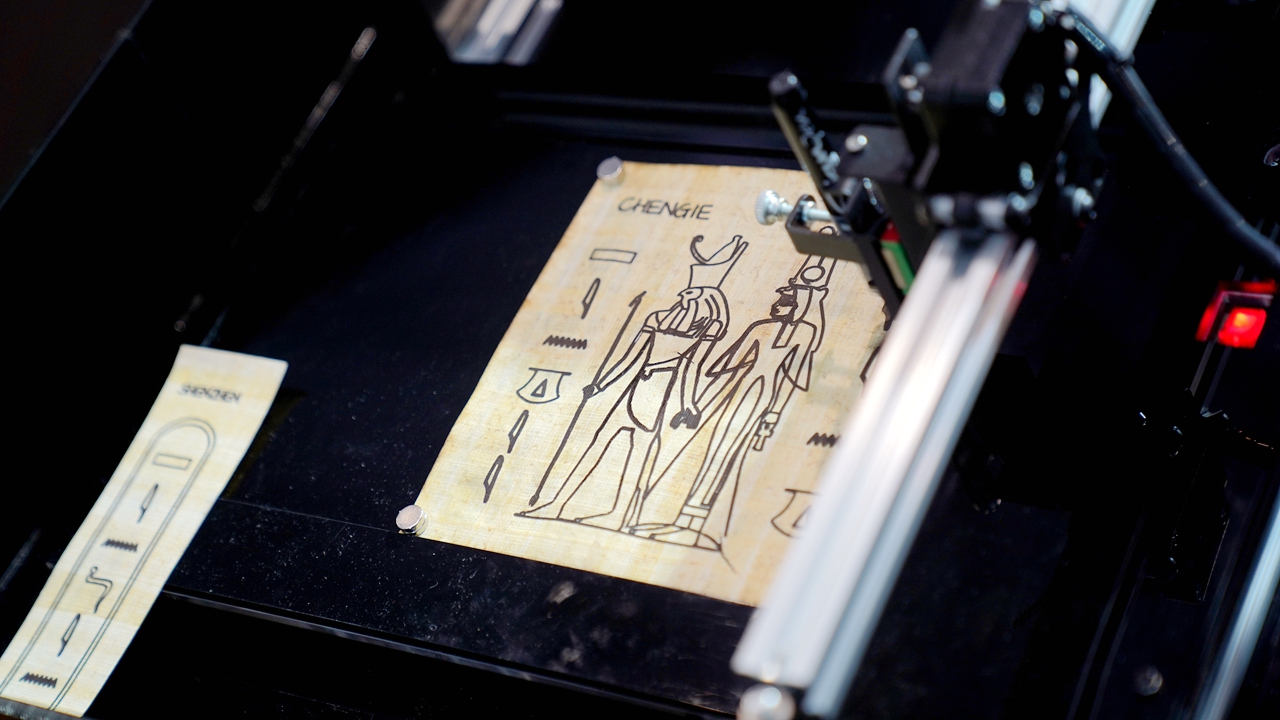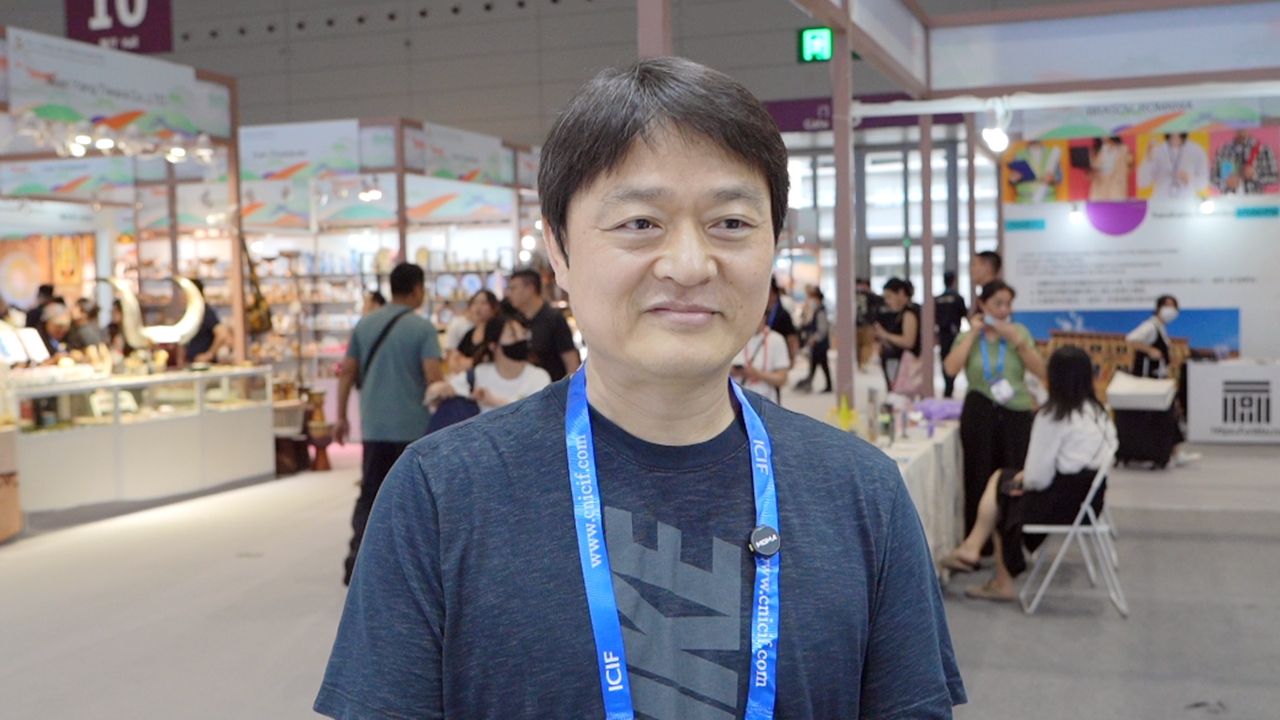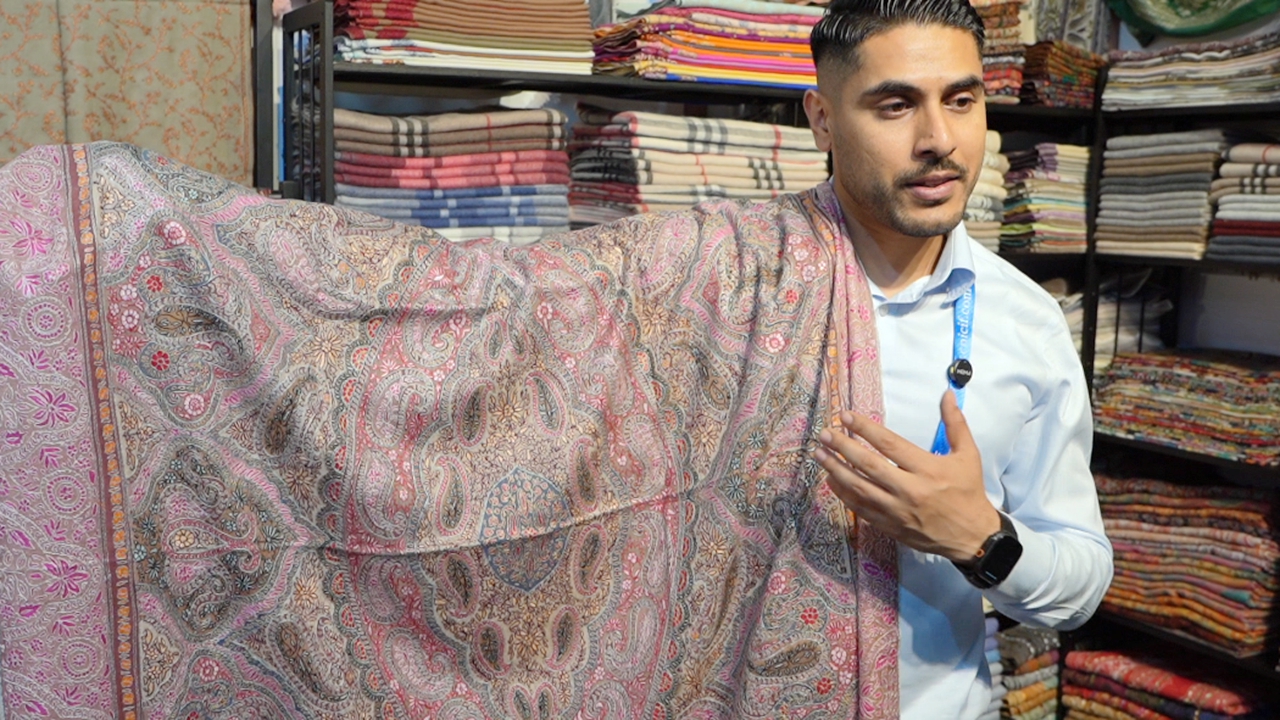Global exhibitors converge at fair
Writer: Chen Siqi, Lian Jiaqi | Editor: Lin Qiuying | From: Original | Updated: 2025-05-26
Global exhibitors are participating in the China (Shenzhen) International Cultural Industries Fair (ICIF) in increasing numbers each year. Now in its 21st year, this year's fair includes 305 overseas exhibitors from 65 countries and regions who are showcasing cultural products both in-person and online.
These international exhibitors account for 20% of all participants, and the diversity of products on display has expanded, covering fields such as tourism, education, creativity, publishing, art, and intangible cultural heritage.
Mostafa Amr, COO and co-founder of Egyptian tech brand PYRUS, attends the ICIF for the first time. Photos by Wang Haolan
For many global exhibitors, the ICIF is not only an annual grand gathering that connects cultural and creative resources from around the world but also an important marketplace for cultural goods and services.
"This is our first time coming to China and participating in the ICIF,” said Mostafa Amr, chief operating officer and co-founder of PYRUS, an Egyptian tech company dedicated to revitalizing ancient Egyptian culture. “We have always been interested in international cultural exhibitions and see this as a vital platform to present our products to the world.”
At the Egyptian Pavilion in Hall 10, PYRUS showcased a special robot capable of writing visitors’ names in hieroglyphics, as well as papyrus bookmarks and postcards. Amr explained that hieroglyphics were the writing system of ancient Egypt, and papyrus was the type of paper ancient Egyptians made and wrote on.

A device on display at the Egyptian Pavilion translates Chinese names into ancient Egyptian hieroglyphs.
“We are popular in Egypt, and Chinese visitors have shown great interest in our products. That’s why we want to come to China and present our culture to the world through this platform,” Amr added. “We are also eager to explore collaborations with Chinese museums and cultural enterprises.”
PYRUS joined six other prominent Egyptian enterprises at the fair, marking Egypt’s first-ever showcase of its cultural and creative products at the ICIF.
<
Video by Wang Haolan
The event also attracted a new participant from South Korea. For ceramics artist Jeong Cheol-ho, attending the ICIF is a precious opportunity. “I want to introduce South Korea’s style of luck symbols to the Chinese audience,” said Jeong.
Jeong specially prepared new works for the fair, including a series of ceramic pollock fish and tiger cats. Having dedicated over 30 years to his craft, Jeong aims to reinterpret traditional motifs from a modern perspective.


South Korean ceramics artist Jeong Cheol-ho and some of his art pieces designed specially for the 21st ICIF.
He explained that the Alaska pollock is significant to South Koreans. Traditionally, people hung dried pollock above doorways to ward off bad luck and bring good fortune. However, the challenge was how to preserve the fish long-term.
“By recreating this symbol in ceramics, I have updated the folk tradition, preserving its cultural meaning while making it last longer,” Jeong said.
In South Korea, tigers hold a strong cultural significance and often appear in folk paintings displayed in homes, Jeong explained. “But making a tiger out of ceramics felt too fierce. So, I combined the tiger’s symbolism with the softer image of a cat.”
Sharing his thoughts on the ICIF, he said, “The scale of the fair was even larger than I expected. Seeing Chinese people interested in South Korean culture made me very happy."
The South Korea Industrial Culture Industry Research Institute, organizer of the South Korean booth, brought several artists to showcase glass products, handmade teapots, and tubing paintings.
Video by Lin Songtao
Nepalese exhibitor Shankar Koirala represented his company Angel Hands at the fair for the fifth time. Koirala said that the cultural fair feels like an old friend — a place where he can always learn new things.
Among classic handmade cashmere scarves with colorful patterns, he highlighted one with elegant blue and gold patterns that blends Nepalese craftsmanship with Chinese elegance. "Chinese customers often wear Qipao, which is already colorful. They prefer scarves in simple, elegant colors to complement their outfits, so we created these designs," Koirala explained.
“The Shenzhen cultural fair is a platform where cultures from different countries can exchange and connect,” he added.


Nepalese exhibitor Shankar Koirala showcases handmade cashmere scarves and singing bowls brought to this year’s fair. Photos by Lin Songtao
Since launching in 2004, the ICIF has expanded in scale, number of visitors, and international participation. It has become an important platform for promoting the development and openness of China’s cultural industries.


